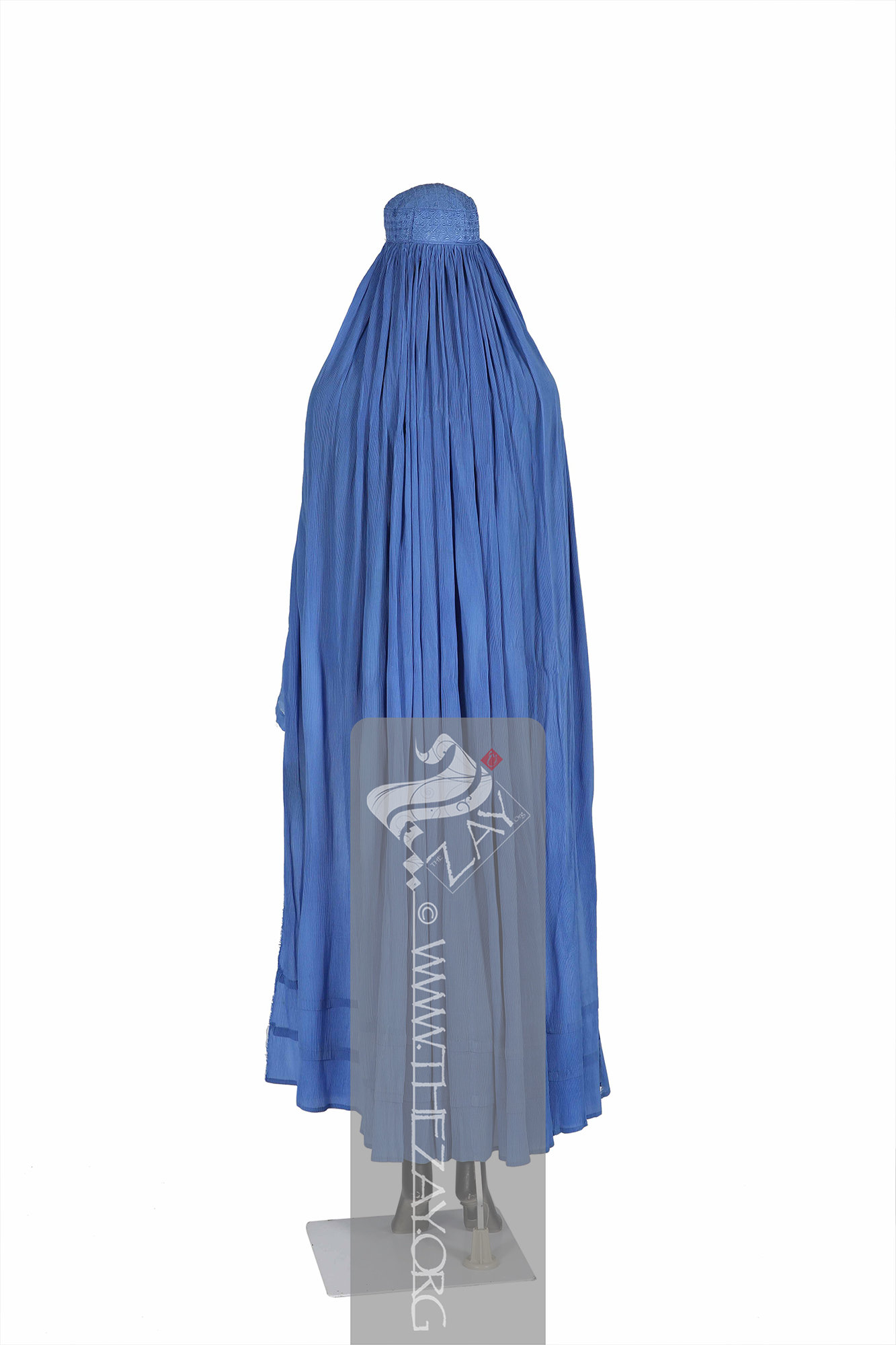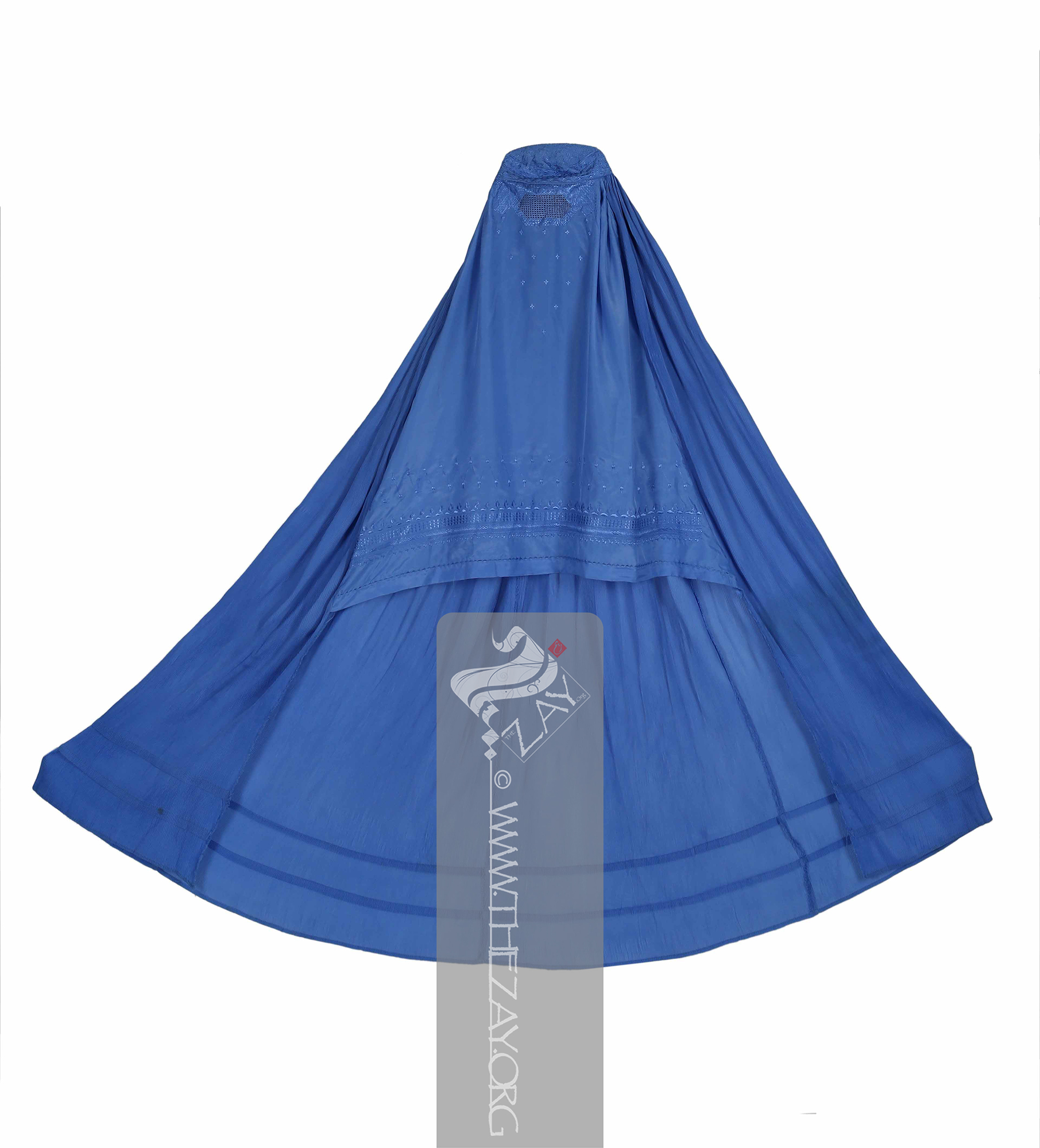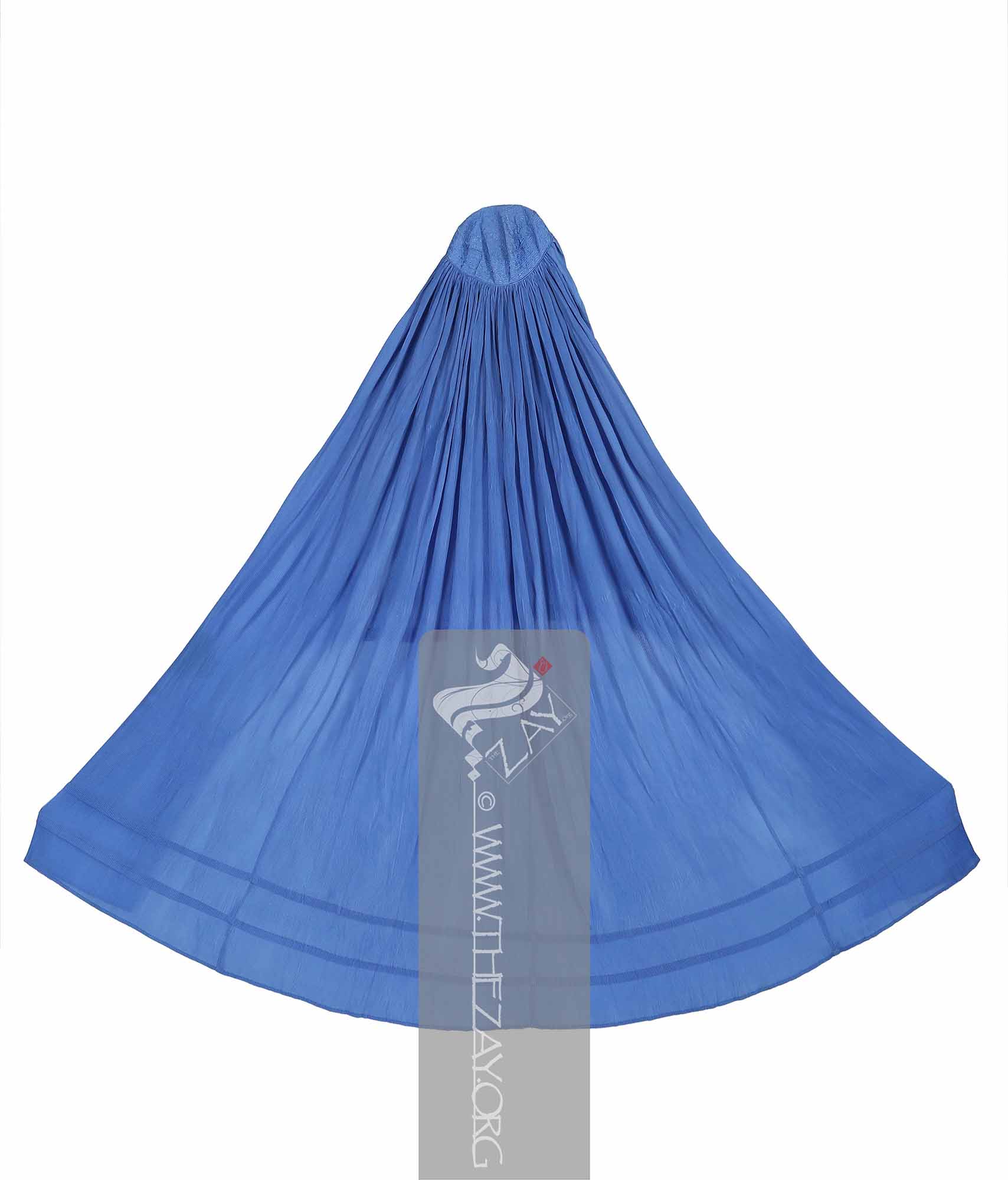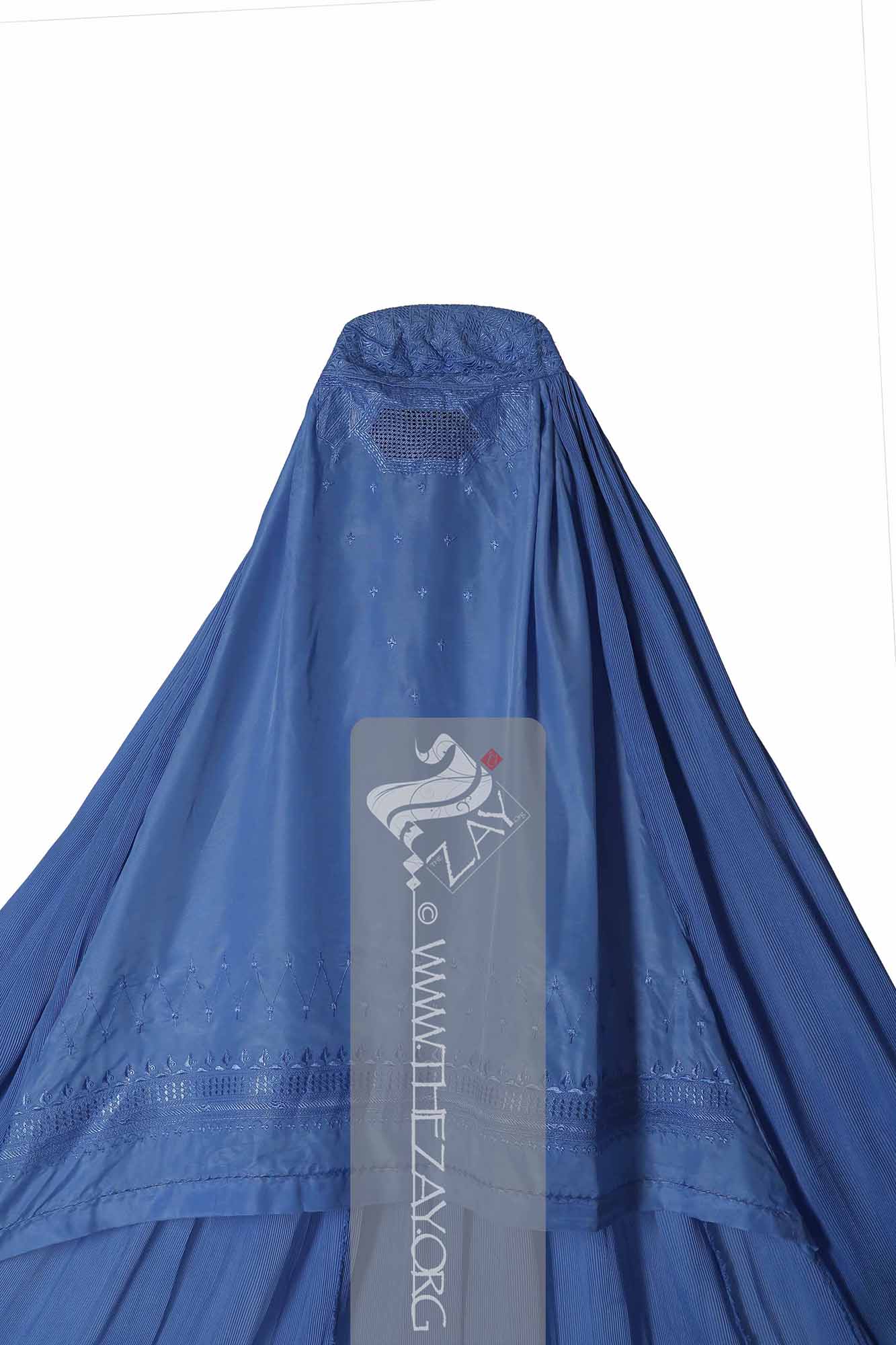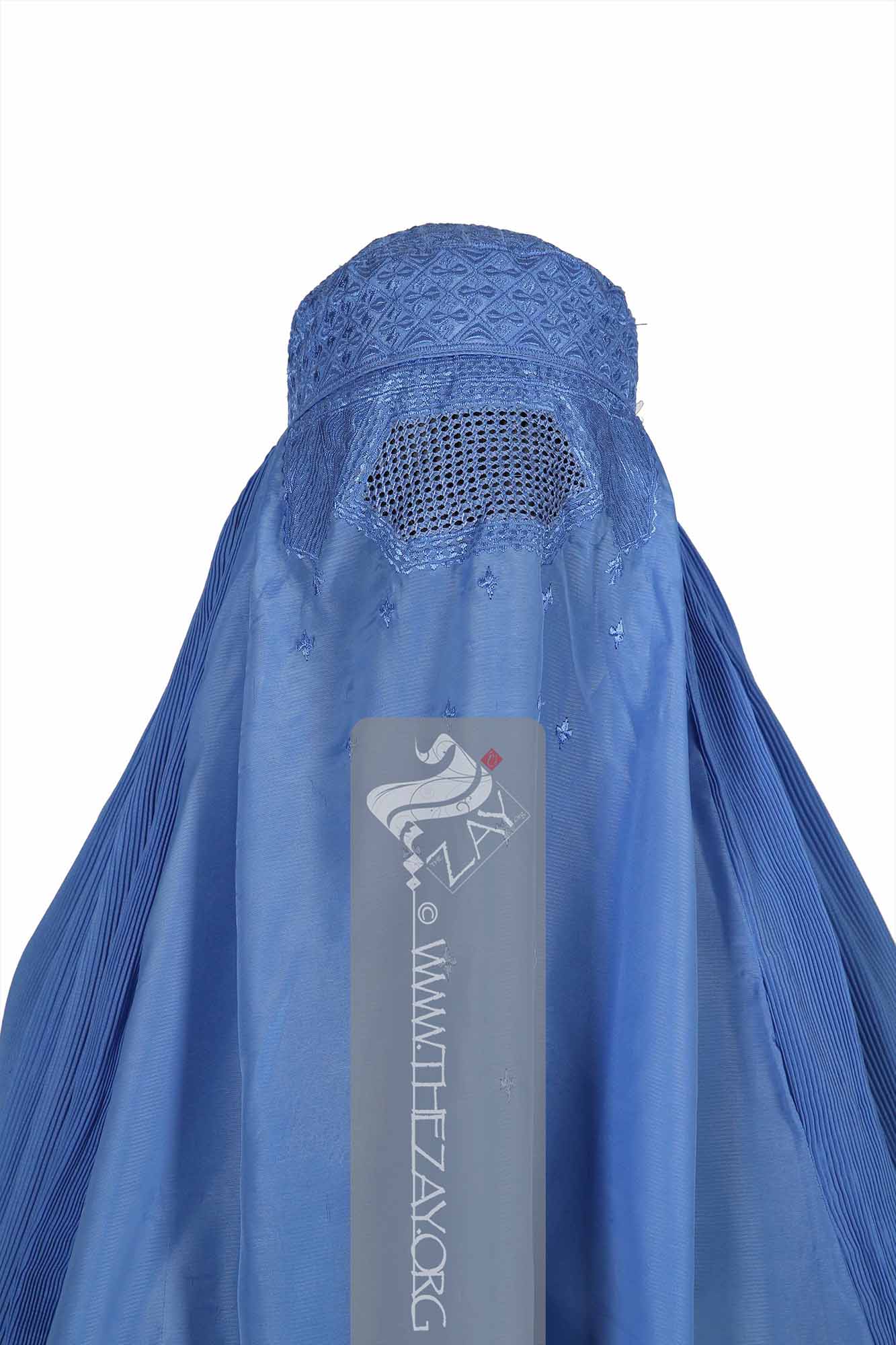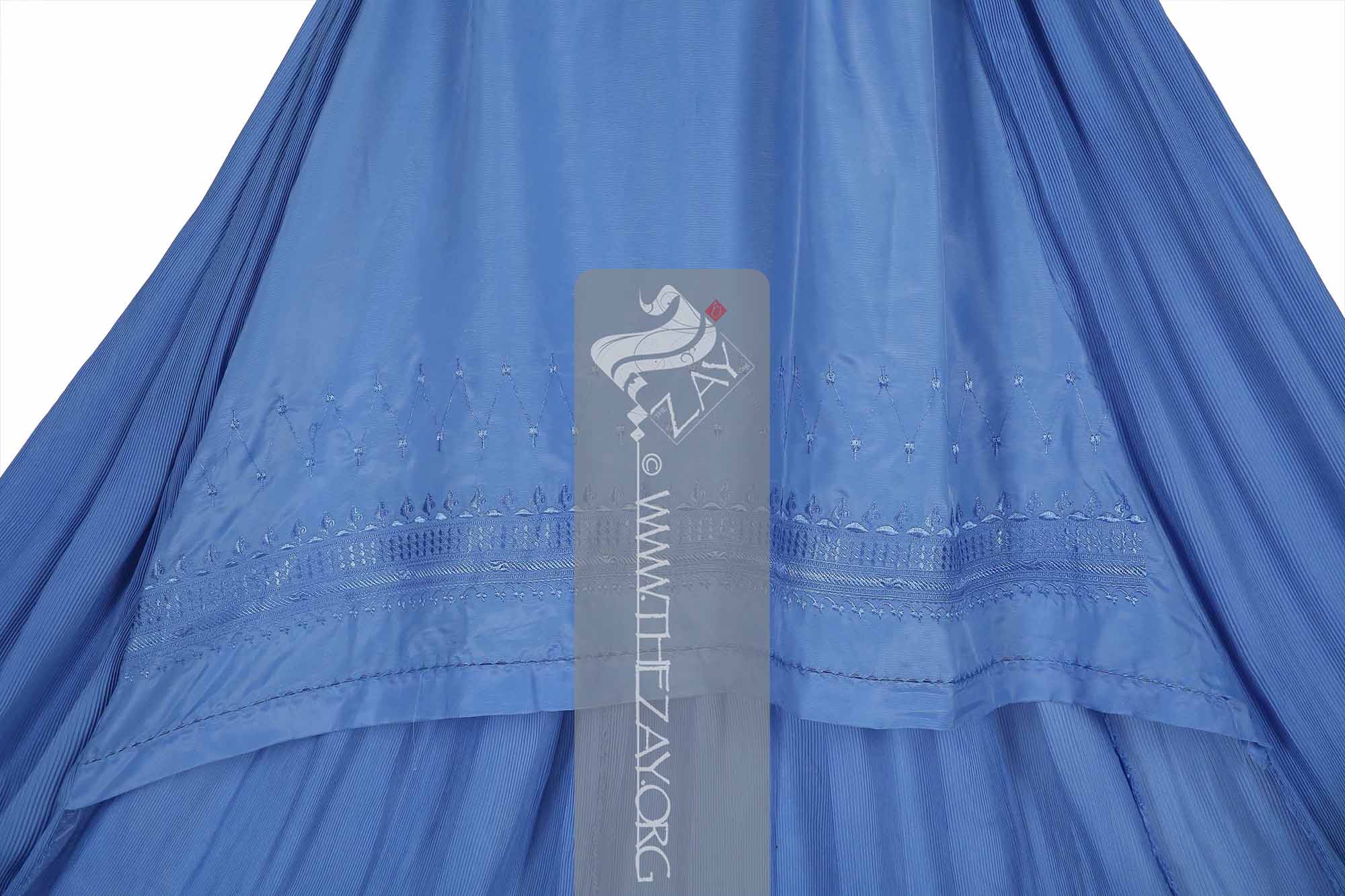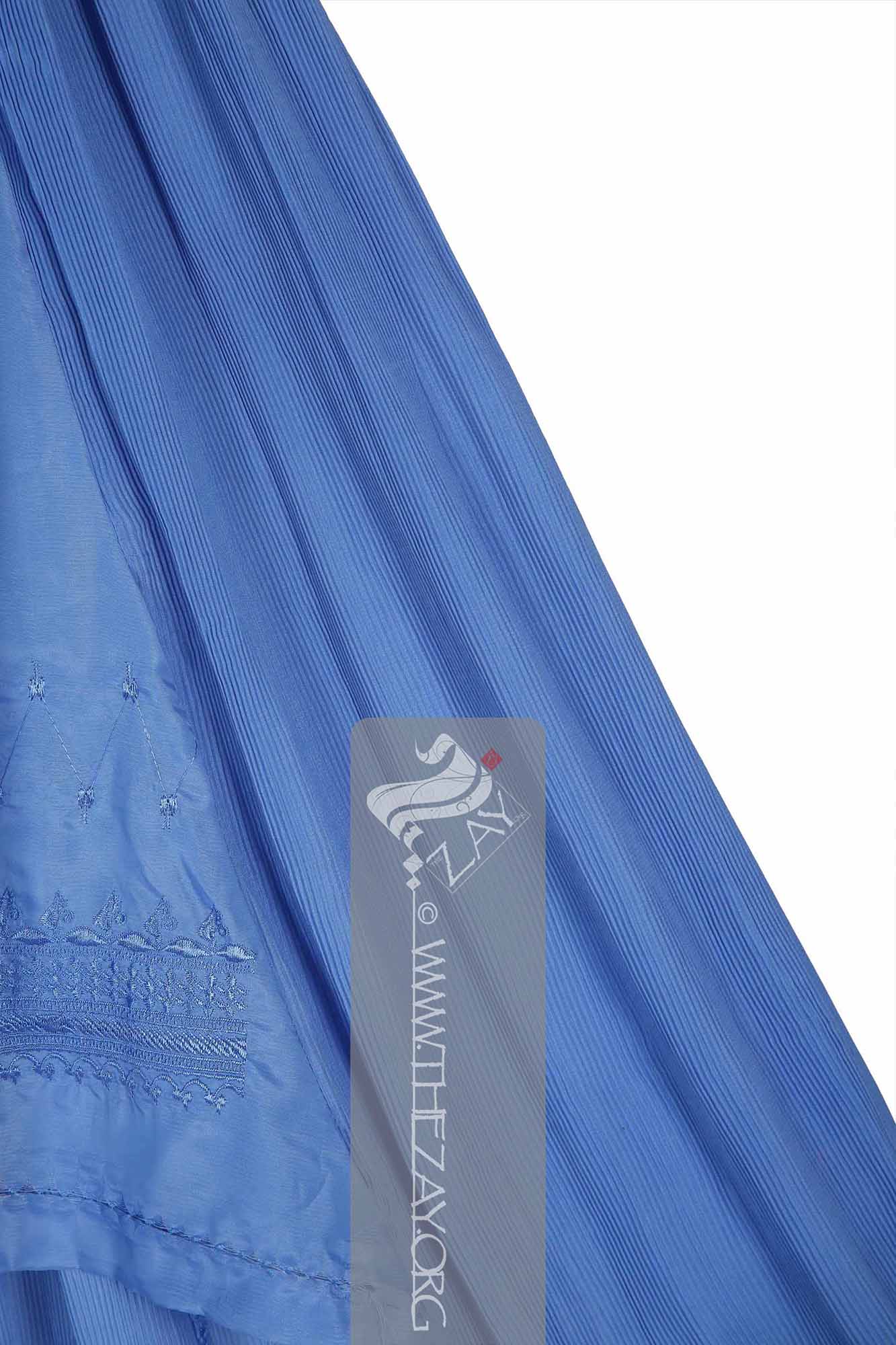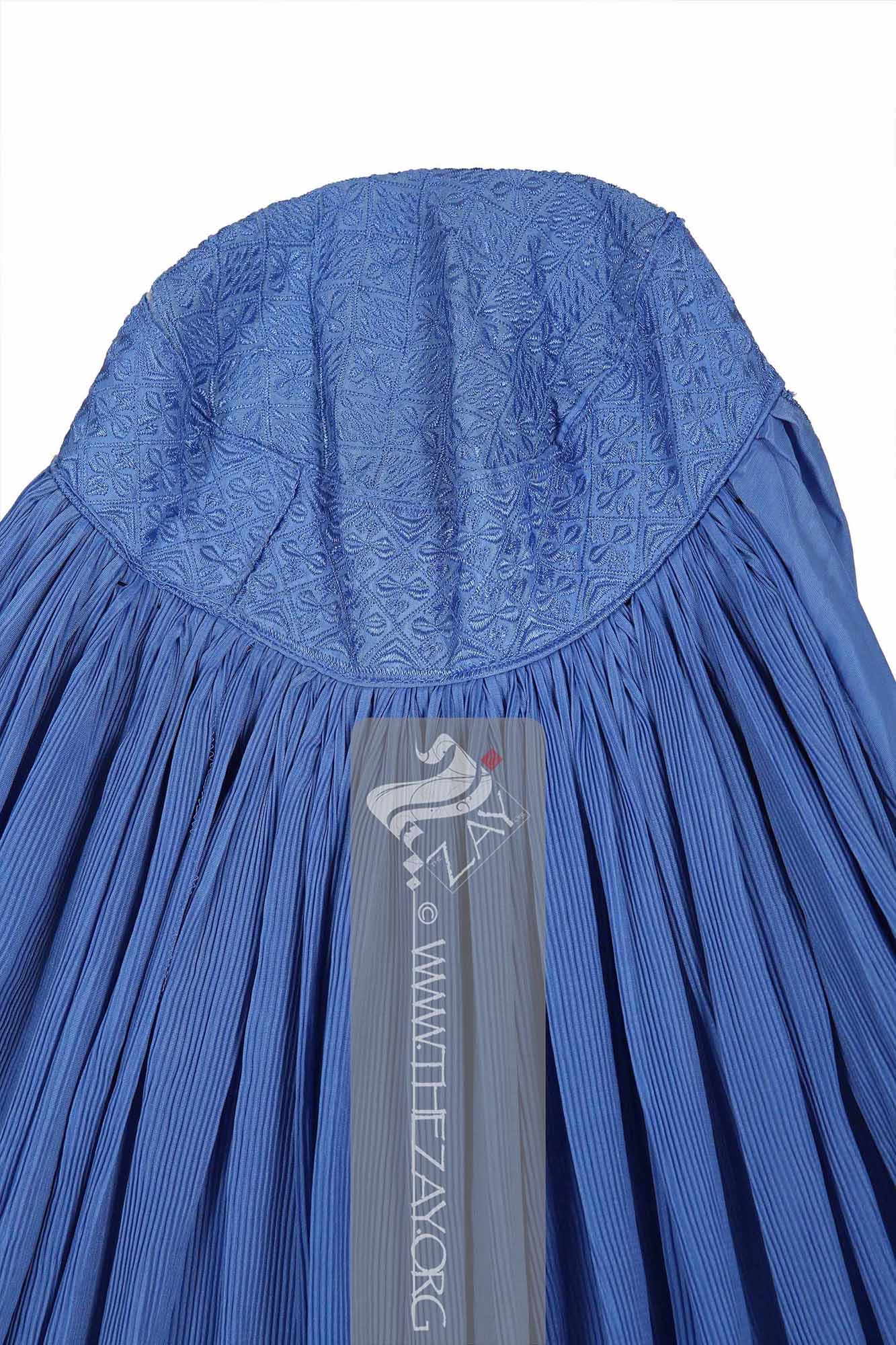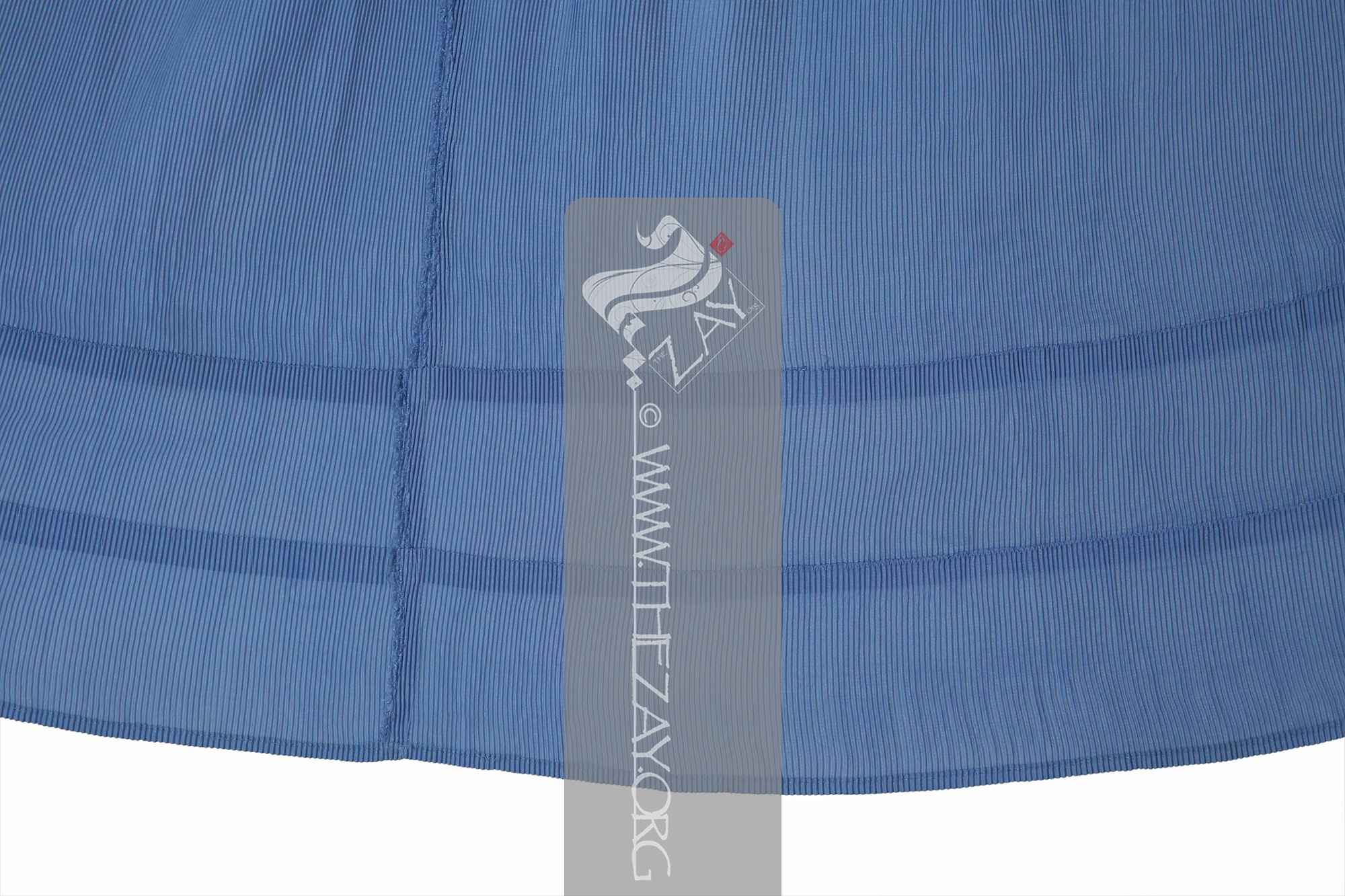Object History This typical Afghan women’s cloak or (
chadari
Chadari: (Persian: Čādor – Tent; from Sanskrit: Chhatra – Ceremonial parasol), a loose-fitting, head, face and body covering worn by some women in Afghanistan and neighbouring regions. It typically consists of a head cover stitched to a veil like cloak with only a mesh screen or small opening for the eyes. ) was spotted and purchased by
Dr. Reem Tariq
Ṭariq: (Arabic; Synonym: tulle_bi_talli; talli; badla; khus_dozi ), series of small metal knots made on a woven net ground as embellishment. The term is commonly used in the Levant Arab region specifically in Lebanon.
El Mutwalli
Dr. Reem Tariq
Ṭariq: (Arabic; Synonym: tulle_bi_talli; talli; badla; khus_dozi ), series of small metal knots made on a woven net ground as embellishment. The term is commonly used in the Levant Arab region specifically in Lebanon.
el Mutwallī: Founder (CEO) of the Zay
Zay: (Arabic: costume, Pl. azyaā’), a set of clothes in a style typical of a particular country or historical period. Initiative, a public figure, speaker and author. An expert curator and consultant in Islamic art and architecture, interior design, historic costume, and UAE heritage., during a routine visit to the Sharjah antique or Islamic sūq more recently known as The Blue Souk in 2021. It was acquired to enhance the collection of The
Zay
Zay: (Arabic: costume, Pl. azyaā’), a set of clothes in a style typical of a particular country or historical period. Initiative.
Though purchased as is, it would most likely have been worn with a matching skirt to cover the lower half of the body.
Object Features This is a blue women’s cloak or
chadari
Chadari: (Persian: Čādor – Tent; from Sanskrit: Chhatra – Ceremonial parasol), a loose-fitting, head, face and body covering worn by some women in Afghanistan and neighbouring regions. It typically consists of a head cover stitched to a veil like cloak with only a mesh screen or small opening for the eyes. typical to Afghanistan and of the Afghan population in neighbouring Pakistan.
This
chadari
Chadari: (Persian: Čādor – Tent; from Sanskrit: Chhatra – Ceremonial parasol), a loose-fitting, head, face and body covering worn by some women in Afghanistan and neighbouring regions. It typically consists of a head cover stitched to a veil like cloak with only a mesh screen or small opening for the eyes. is made of a silk-like material possibly polyester and is embellished with embroidery of similar colour silk
floss
Floss: (Old French: flosche – nap of velvet), is a type of silk fibre obtained from the cocoons of wild silkworms. It is characterized by its long, fluffy fibers that are not tightly woven, making it ideal for use in various textile applications such as embroidery, lace-making, and sewing. threads. The back is made of a plain blue (
plisse_pleated
Plisse_pleated: (French), textile treatment technique where the fabric is chemically or mechanically manipulated to create permanent, narrow, and puckered pleats involving heat setting. Originating in the early 20th century it remains popular in fashion today. ) fabric.
The head has a skull cap with heavy embroidery mostly in (
satin_stitch
Satin_stitch: (Synonym: Damask Stitch), is a type of flat embroidery stitch that creates a satin like smooth and shiny surface by closely spaced stitches, covering an entire area or shape.) style depicting floral motifs as well as geometric designs around the eye opening. The front piece is a different fabric than the back and is embroidered with a thick band of floral motifs in
satin_stitch
Satin_stitch: (Synonym: Damask Stitch), is a type of flat embroidery stitch that creates a satin like smooth and shiny surface by closely spaced stitches, covering an entire area or shape. with a similar shade of silk
floss
Floss: (Old French: flosche – nap of velvet), is a type of silk fibre obtained from the cocoons of wild silkworms. It is characterized by its long, fluffy fibers that are not tightly woven, making it ideal for use in various textile applications such as embroidery, lace-making, and sewing. threads. It has an eye-opening constructed net, resembling lattice work seen on Islamic architectural screens – mashrabiyah – separately attached to the fabric which flaunts heavy embroidery around it.
It also features a band of
cutwork
Cutwork: It is a surface embroidery technique using two main stitches – the running stitch and the buttonhole stitch and is usually made on fine linen or cotton with threads that match the fabric colour. It creates a lace like pattern while the stitches prevent the fabric from fraying. near the hem with (buttonhole_stitch). The back piece has ruffles or layers or horizontal frills below the waist created by folding the fabric and stitching it.
Off late this garment is often seen in light blue and has become synonymous with Afghan women’s attire, however, traditionally they were also made of an array of different colours such as brown, ivory, green, and black.
Links
- Valérie Bérinstain, Mary Hunt Kahlenberg, Zaira Mis, Marcel Mis. Asian Costumes and Textiles from the Bosphorus to Fujiyama: The Zaira and Marcel Mis Collection. California: Skira, 2001.
- Suleman, Fahmida. Textiles of the Middle East and Central Asia (British Museum) The Fabric of Life. London: Thames and Hudson, 2017.
- Embroidery from Afghanistan Fabric, folios. Sheila Paine. Washington: University of Washington Press, 2006.
- Sukhareva, Olʹga Aleksandrovna. Suzani
Suzani: (Farsi: suzandozi : needlework, from Farsi: suzan: needle, dozi: embellishment), type of embroidered and decorative Central Asian tribal textile art usually on a cotton fabric, embroidered in both silk or cotton thread with primarily chain, satin, and buttonhole stitches as well as couching technique. : Central Asian Decorative Embroidery. Samarkand: SMI Asia, 2013.
- Click here to know more about the (burqa) and a chadari
Chadari: (Persian: Čādor – Tent; from Sanskrit: Chhatra – Ceremonial parasol), a loose-fitting, head, face and body covering worn by some women in Afghanistan and neighbouring regions. It typically consists of a head cover stitched to a veil like cloak with only a mesh screen or small opening for the eyes. :
- https://referenceworks.brillonline.com/entries/encyclopaedia-iranica-online/clothing-COM_7759?lang=fr#COM-10186
- https://www.theatlantic.com/photo/2013/07/afghanistan-in-the-1950s-and-60s/100544/
- https://trc-leiden.nl/collection/?trc=&zoek=afghan&cat=&subcat=&g=&s=100&f=0&id=2471






